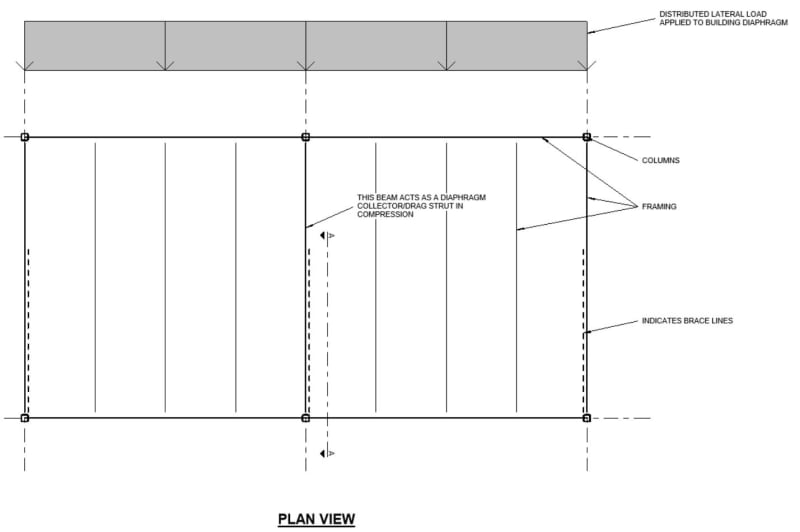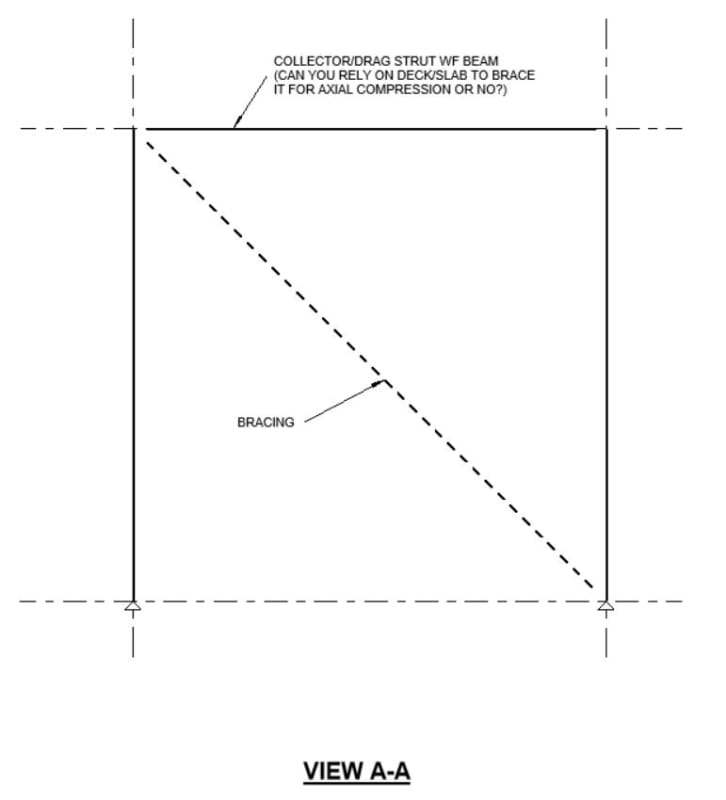MJC6125
Structural
- Apr 9, 2017
- 119
Can you rely on a slab-on-metal deck or a roof deck to prevent weak axis bucking of a steel beam? Specifically when you have a WF beam in line with a brace and the beam is acting as a drag strut, whether its at the roof or a floor level. Let's assume framing is running parallel to this beam, so you don't have any members framing into it. This beam will need to carry an axial compression load under certain lateral loading conditions.
I'm pretty sure you can't rely on the deck for weak axis buckling of a WF beam, but I'm not positive on that. Wood stud walls are sometimes built with sheathing only on the outside (i.e. in an unfinished garage), and I think those studs typically need to rely on that one sided sheathing for weak axis bracing. So are there certain scenarios where decking/sheathing can be relied upon for weak axis buckling and certain scenarios where it can not?
For the original stated example, assuming the deck doesn't provide weak axis bracing, do you typically find that these collector steel beams work without needing weak axis bracing or that you install supplementary bracing to prevent weak axis buckling?
I'm pretty sure you can't rely on the deck for weak axis buckling of a WF beam, but I'm not positive on that. Wood stud walls are sometimes built with sheathing only on the outside (i.e. in an unfinished garage), and I think those studs typically need to rely on that one sided sheathing for weak axis bracing. So are there certain scenarios where decking/sheathing can be relied upon for weak axis buckling and certain scenarios where it can not?
For the original stated example, assuming the deck doesn't provide weak axis bracing, do you typically find that these collector steel beams work without needing weak axis bracing or that you install supplementary bracing to prevent weak axis buckling?


